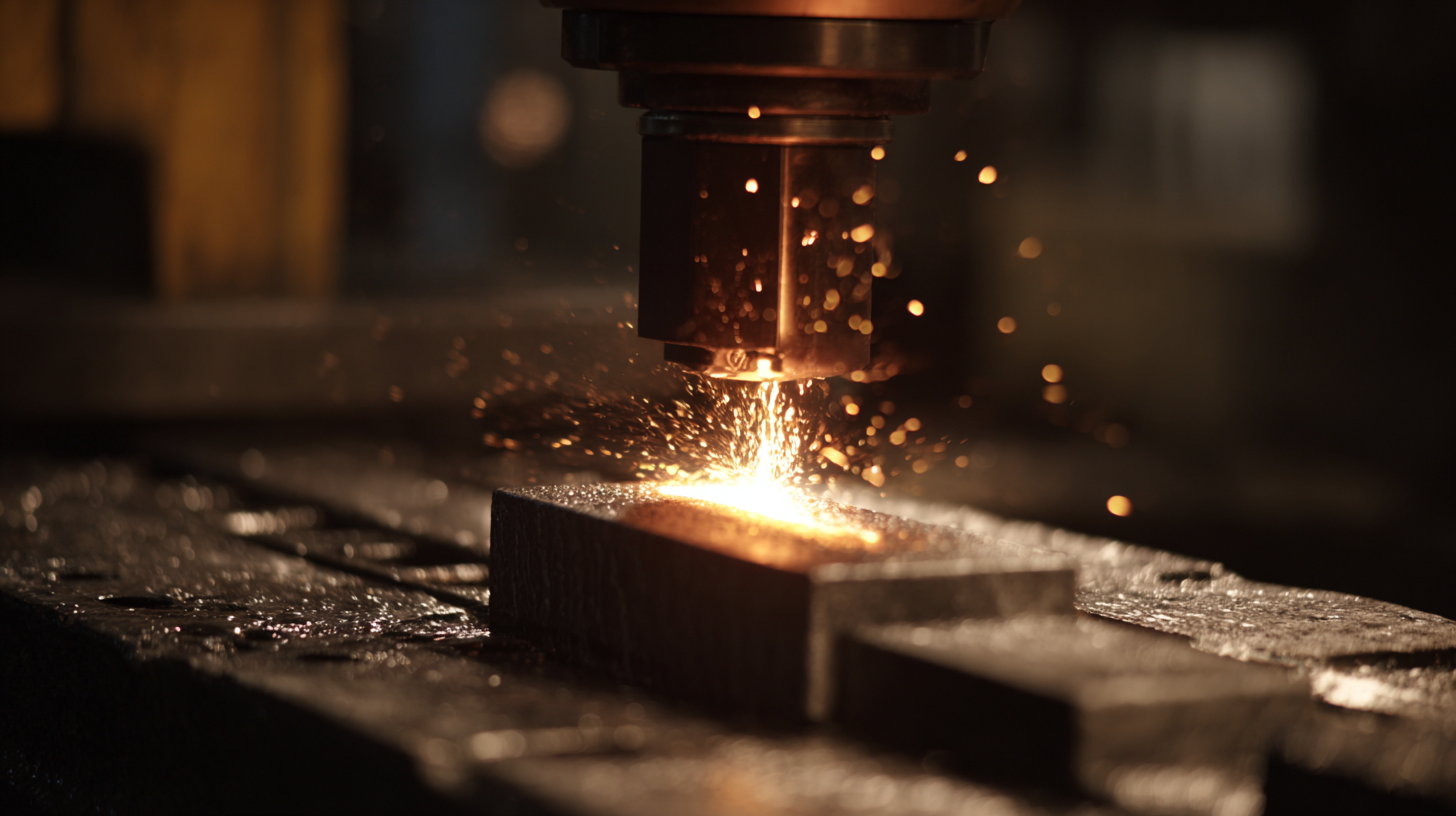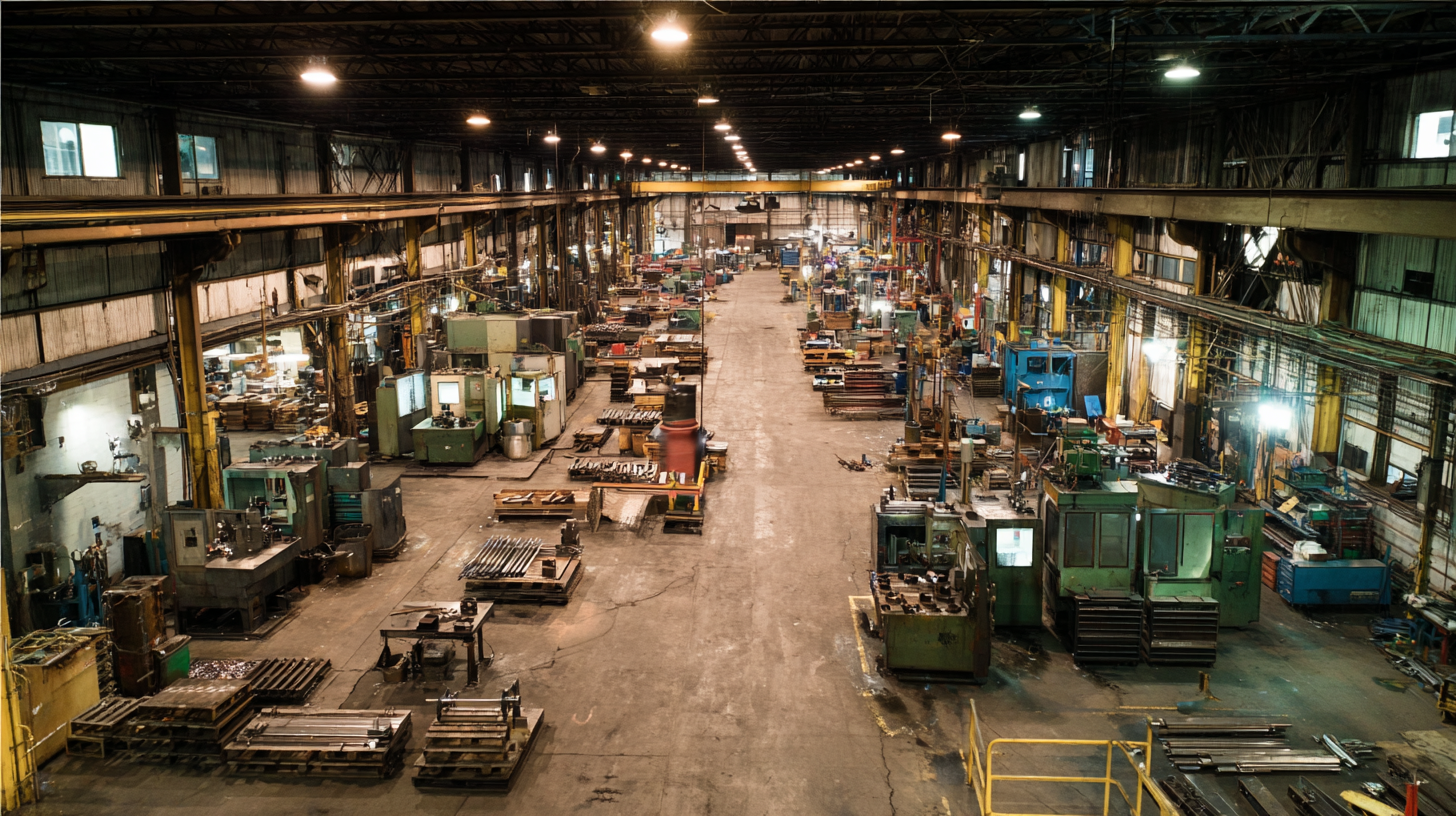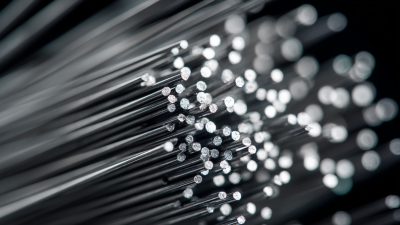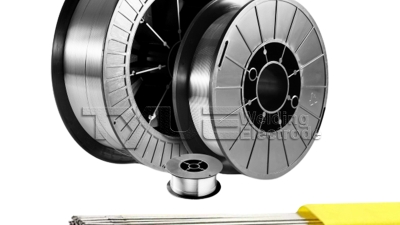Unlocking the Advantages of Brazings: Why This Technique Is a Game Changer in Manufacturing
Table of Contents
- Advantages of Brazing Over Traditional Welding Techniques in Modern Manufacturing
- Key Industries Benefiting from Brazing: Insights and Statistics
- Cost-Effectiveness of Brazing: Analyzing Long-Term Savings and Efficiency
- Material Compatibility in Brazing: Expanding Choices for Manufacturers
- The Environmental Impact of Brazing Compared to Other Joining Processes
- Innovations in Brazing Technology: Trends Shaping the Future of Manufacturing
- Enhancing Welding Quality: Analyzing AWS ER308LSi Stainless Steel Welding Wire's Role in MIG and TIG Applications with Market Insights
- FAQS
- Conclusion
- Related Posts
You know, brazing has really become a key player in today's manufacturing world. It's giving traditional welding methods a run for their money, and a recent report from Freedonia Group even predicts that the demand for braze materials is gonna grow by about 4.8% annually until 2027. That just shows how much companies are leaning on this technique for different applications. I’ve also gotta mention Wenzhou Tianyu Electronic Co., Ltd.—they’ve been leading the charge since 2000, making top-notch welding electrodes and consumables, like stainless steel, carbon steel, and low alloy electrodes. As the manufacturing scene keeps changing, it’s super important for businesses to get why brazing is such a game-changer—think better joint strength, less thermal distortion, and the ability to join all sorts of dissimilar materials. Getting a good grasp of these benefits could really help industries step up their game, stay competitive, and keep pushing forward in this fast-moving market.

Advantages of Brazing Over Traditional Welding Techniques in Modern Manufacturing
You know, brazing has really made a name for itself as a game-changing technique in manufacturing these days. It has some pretty cool perks over traditional welding, like the ability to join different types of metals—which is kind of a big deal because welding often struggles with that. Thanks to brazing, manufacturers can combine different materials to create lighter but still strong parts, which totally boosts product performance and longevity.
Plus, brazing requires way less heat compared to welding. That means there's less risk of warping or messing up the pieces with heat distortion, leading to much cleaner, more precise joints. And because it doesn’t get as hot, you can even work with heat-sensitive parts without worrying about damaging them. This not only makes the final look better but also cuts down on post-assembly work, saving time and money. As industries keep looking for smarter and more flexible ways to put things together, brazing is really standing out as a true innovator, pushing manufacturing into a whole new level.

Key Industries Benefiting from Brazing: Insights and Statistics
You know, brazing has really become a game-changer in manufacturing these days, especially in big industries like aerospace, electronics, and automotive. As the demand for things that are both precise and durable keeps climbing, the brazing market is actually growing quite a bit and gaining more influence. For example, the Braze Alloys Market is expected to see some serious expansion between 2025 and 2035, which just goes to show how important these materials are in today’s engineering world.
One of the coolest things about brazing is how it allows you to join together different types of metals — stuff that normally wouldn’t work well together — and end up with a super strong, reliable connection that really boosts product performance. Industries that rely on high-performance parts are really starting to benefit from advancements like induction brazing systems. These systems are becoming more popular all over the globe, and as they get easier to access, manufacturers are definitely encouraged to get creative and find ways to make their production smoother and more efficient.
**A few tips**: If you’re thinking about using brazing for your projects, make sure to look into the specific requirements you have — things like operating temperature and what metals you’re dealing with. Also, keeping an eye on market trends and new tech is pretty crucial. It can make a big difference in how you choose your materials and methods. As the whole brazing scene keeps evolving, bringing in new techniques isn’t just about staying up-to-date — it’s also about making your production better and supporting sustainability in modern engineering. It’s all about staying a step ahead, you know?
Unlocking the Advantages of Brazings: Key Industries Benefiting
Cost-Effectiveness of Brazing: Analyzing Long-Term Savings and Efficiency
You know, brazing has really become a go-to method for joining things in manufacturing these days, mainly because it’s so cost-effective. I came across a report from the American Welding Society that says using brazing can cut production costs by up to 30% compared to the standard welding methods. Pretty impressive, right? The reason is that it uses less energy and results in fewer material wastes—especially when dealing with metals that are tricky to weld. Plus, being able to join different types of materials means manufacturers don’t have to spend extra on retooling or choosing entirely new materials all the time.
And honestly, the long-term benefits are just as compelling. There’s this study in the International Journal of Advanced Manufacturing Technology that points out brazed joints tend to have better mechanical properties and hold up well against corrosion. That means products last longer and need less maintenance, which is a big win. In industries like aerospace and automotive, where reliability really isn’t optional, these perks can lead to serious savings over the years. As companies keep looking for smarter ways to boost productivity and cut costs, brazing really stands out as a game-changing technique that could totally shift how production is done.
Unlocking the Advantages of Brazings: Why This Technique Is a Game Changer in Manufacturing
| Material Type | Brazing Temperature (°C) | Joint Strength (MPa) | Cost Savings vs. Welding (%) | Long-Term Efficiency (Years) |
|---|---|---|---|---|
| Copper | 720 | 200 | 30 | 15 |
| Aluminum | 600 | 150 | 25 | 10 |
| Steel | 800 | 250 | 20 | 12 |
| Brass | 700 | 180 | 15 | 14 |
Material Compatibility in Brazing: Expanding Choices for Manufacturers
You know, brazing has really become a game-changer in the manufacturing world. It's pretty impressive how it allows folks to create strong, reliable joints across all kinds of materials. One of the coolest things about brazing is that it plays well with different substrates, so manufacturers aren’t stuck sticking to just one type of material. This opens up a lot of doors—you can join metals to ceramics or even composites, which is a huge plus for innovation and trying out new designs.

Plus, the variety of brazing alloys out there is growing all the time, and that really helps with compatibility. Companies can pick from a bunch of filler metals, each designed to bond better with certain materials, making sure that the finished product is solid and performs well. It’s a win-win—production gets easier, waste goes down because there’s less trial and error, and manufacturers can really push the limits when it comes to designing lightweight yet tough products. As the industry keeps moving forward, jumping on the brazing bandwagon seems like a smart move—it’s key to meeting the rising demands for efficiency and sustainability in manufacturing today.
The Environmental Impact of Brazing Compared to Other Joining Processes
You know, brazing is really gaining attention as a pretty efficient way to join metals, and it’s actually got some clear environmental perks over the usual methods like welding and soldering. I read somewhere that, according to the International Institute of Welding, brazing cuts down on greenhouse gases because it needs less energy — like, up to 30% less energy compared to welding. That’s a big deal, especially now when everyone’s talking about cutting down their carbon footprint. It’s not just about saving costs, but also about being more eco-friendly, which is pretty cool, right?
On top of that, brazing makes it easier to connect different kinds of materials. That means less waste and better resource use overall. The American Welding Society points out that being able to join dissimilar metals so effectively lets industries make the most of what they already have — which means fewer raw resources need to be pulled out of the ground. In the long run, that’s a win for the environment.
If you’re thinking about using brazing in your manufacturing setup, it’s a good idea to really consider what types of materials you’re working with. That can make a big difference in how efficient and sustainable the process ends up being. Also, stay updated on the latest standards and new flux or filler materials — they can really help you minimize your environmental impact even more.
Innovations in Brazing Technology: Trends Shaping the Future of Manufacturing
As the manufacturing world keeps evolving, new breakthroughs in brazing technology are really shaping what’s coming next across lots of industries. According to a report from MarketsandMarkets, the global brazing market could hit around $7.5 billion by 2027, growing at about 6.2% annually from 2022. That’s pretty significant and shows how more and more companies are adopting these advanced brazing methods, especially because there’s a big push for high-performance materials and the need for super durable, reliable joints in sectors like aerospace, automotive, and electronics.
One trend you're seeing more of in brazing tech is the move towards high-temperature alloys, which basically give you stronger joints and better heat resistance. The American Welding Society’s research points out that these alloys can handle some serious conditions, making them perfect for things like gas turbines and heat exchangers. Plus, automated brazing systems are really making a difference—they’re not only boosting precision but also cutting down production costs, so companies can produce more, faster, and with better consistency. If manufacturers jump on these trends and start using more modern brazing techniques, they’ll definitely have a leg up in the competitive global market.
Enhancing Welding Quality: Analyzing AWS ER308LSi Stainless Steel Welding Wire's Role in MIG and TIG Applications with Market Insights
In the realm of modern welding applications, the choice of welding wire is critical for achieving high-quality results. The AWS ER308LSi stainless steel welding wire stands out for its exceptional cladding efficiency and versatile performance in both MIG and TIG welding processes. According to industry reports, using high-grade stainless steel welding wire significantly enhances the integrity of welds, ensuring robustness and durability across various applications. Specifically, ER308LSi is known for its excellent resistance to corrosion and high temperatures, making it a preferred choice in sectors such as building structures, vehicle manufacturing, and bridge engineering.
The versatility of AWS ER308LSi also extends to all-position welding, simplifying the work for welders who frequently transition between different positions. Reports indicate that welders utilizing this wire often experience improved arc stability and reduced spatter, factors that may lead to lower overall production costs and higher output efficiency. Additionally, the wire’s enhanced technical performance is crucial for industries such as mining machinery and oil pipeline construction, where the structural integrity of welds is paramount.
Furthermore, with the continuous advancements in welding technologies, the demand for high-quality stainless steel welding wire like ER308LSi is on the rise. A recent market analysis highlighted a projected growth rate of over 5% in the stainless steel welding wire segment by 2026, fueled by increased investments in infrastructure and energy sectors. This trend underscores the importance of selecting the right materials to achieve optimal welding quality and efficiency.
FAQS
: Brazing offers several advantages, including the ability to join dissimilar metals, lower heat input, minimized risk of warping, and the capability to work with heat-sensitive components without compromising their integrity.
Key industries benefiting from brazing include aerospace, electronics, and automotive, as these sectors demand high precision and durability in their products.
The precision of brazing improves the aesthetic quality of final products by reducing distortion and warping, resulting in more reliable and visually appealing joints.
The global brazing market is projected to reach $7.5 billion by 2027, growing at a CAGR of 6.2% from 2022, indicating increasing adoption of advanced brazing techniques.
Key innovations include the transition to high-temperature brazing alloys for better strength and thermal resistance, and the development of automated brazing systems that enhance precision and reduce production costs.
When selecting brazing techniques, it's important to assess the specific temperature requirements of the project, as lower heat input during brazing allows for the use of heat-sensitive components while minimizing distortion.
Induction brazing systems are gaining traction in global markets, promoting the combination of strong, reliable connections for high-performance materials and encouraging manufacturers to explore innovative production processes.
Manufacturers can stay informed by monitoring market trends, emerging technologies, and advancements in brazing techniques, which can significantly influence material selection and manufacturing strategies.
Reduced thermal impact minimizes warping and distortion of workpieces, leading to more precise and reliable joints, which ultimately enhances product performance.
Assessing material compatibility is crucial to ensure successful joint formation and optimize the performance of the finished product, especially when dealing with dissimilar metals.
Conclusion
You know, in today’s world of manufacturing, brazing is really making a splash as a game-changer. It’s been gaining popularity because it offers some pretty cool advantages over traditional welding. For starters, it can join different types of materials together and still deliver strong, durable bonds—way better than some older methods. That means manufacturers now have more options when it comes to choosing materials. You see industries like automotive and aerospace jumping on board more and more, and the numbers show just how much this technique is catching on.
And let’s not forget, brazing doesn’t just make sense technically—it’s also easier on the wallet long-term. It boosts efficiency, reduces waste, and saves money over time. Plus, with all the environmental talk lately, brazing is looking like a smarter, more eco-friendly option compared to other joining methods. The tech behind it is constantly evolving too, which is pretty exciting. Companies like Wenzhou Tianyu Electronic Co., Ltd., with over twenty years of experience in welding consumables and electrodes, are definitely paying attention. Adopting brazing could really be a smart move—helping improve product quality and streamline operations at the same time.
Related Posts
-

Elevate Your Welding Standards with E81T-Ni1: Quality Chinese Manufacturing for Global Markets
-

Ultimate Checklist to Choose the Best Tig Wire for Your Welding Projects
-

What Makes the Best Stick Welding Rods Stand Out in Today’s Market
-

Maximize Your Savings with Best Welding Rod After Sales Support and Maintenance Cost Tips
-

Top Strategies for Selecting the Best Electrode Metal for Your Industrial Needs
-

Unmatched Quality of Best Aluminum Welding Electrode from China to the World
Blog Tags:


